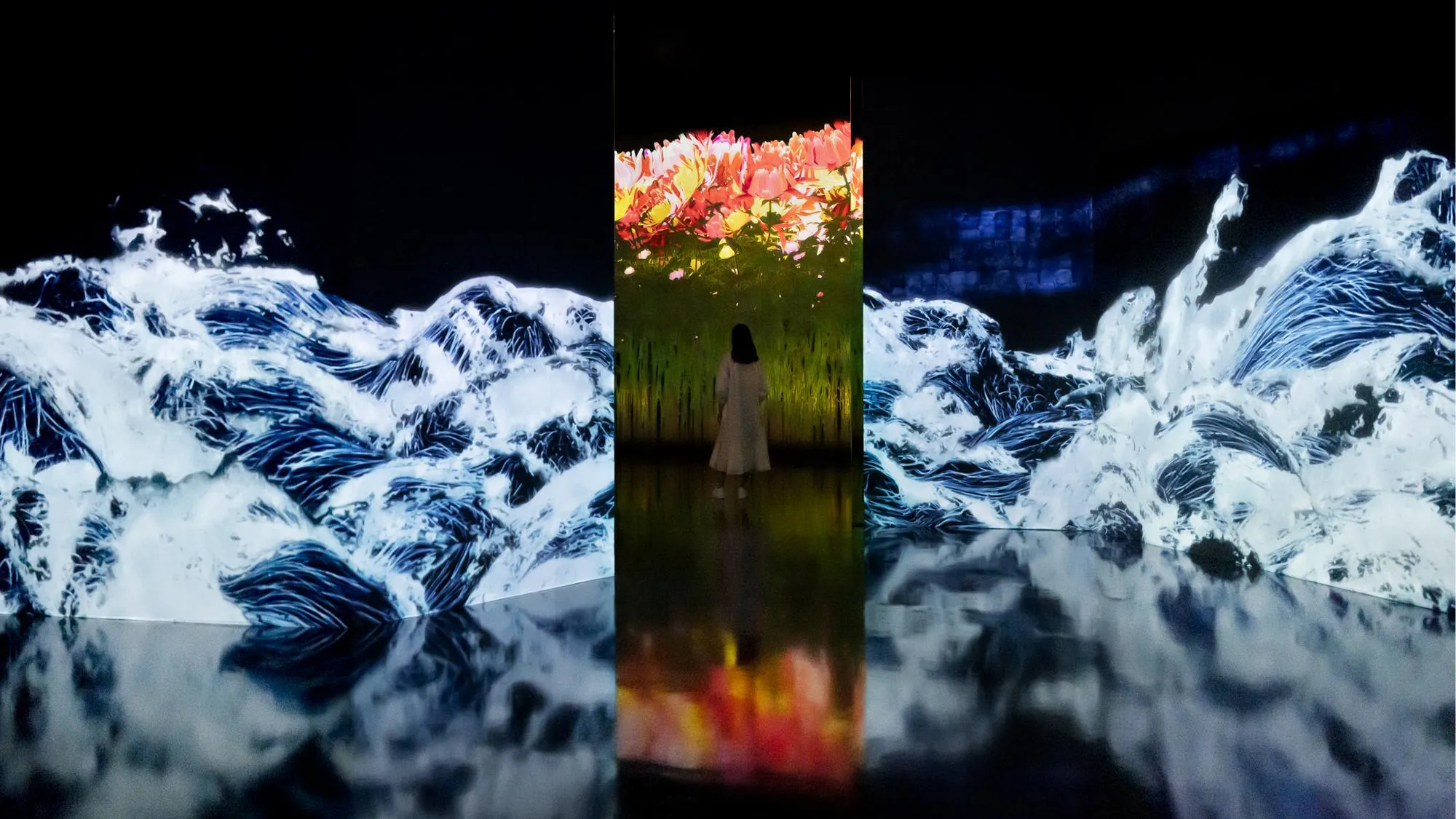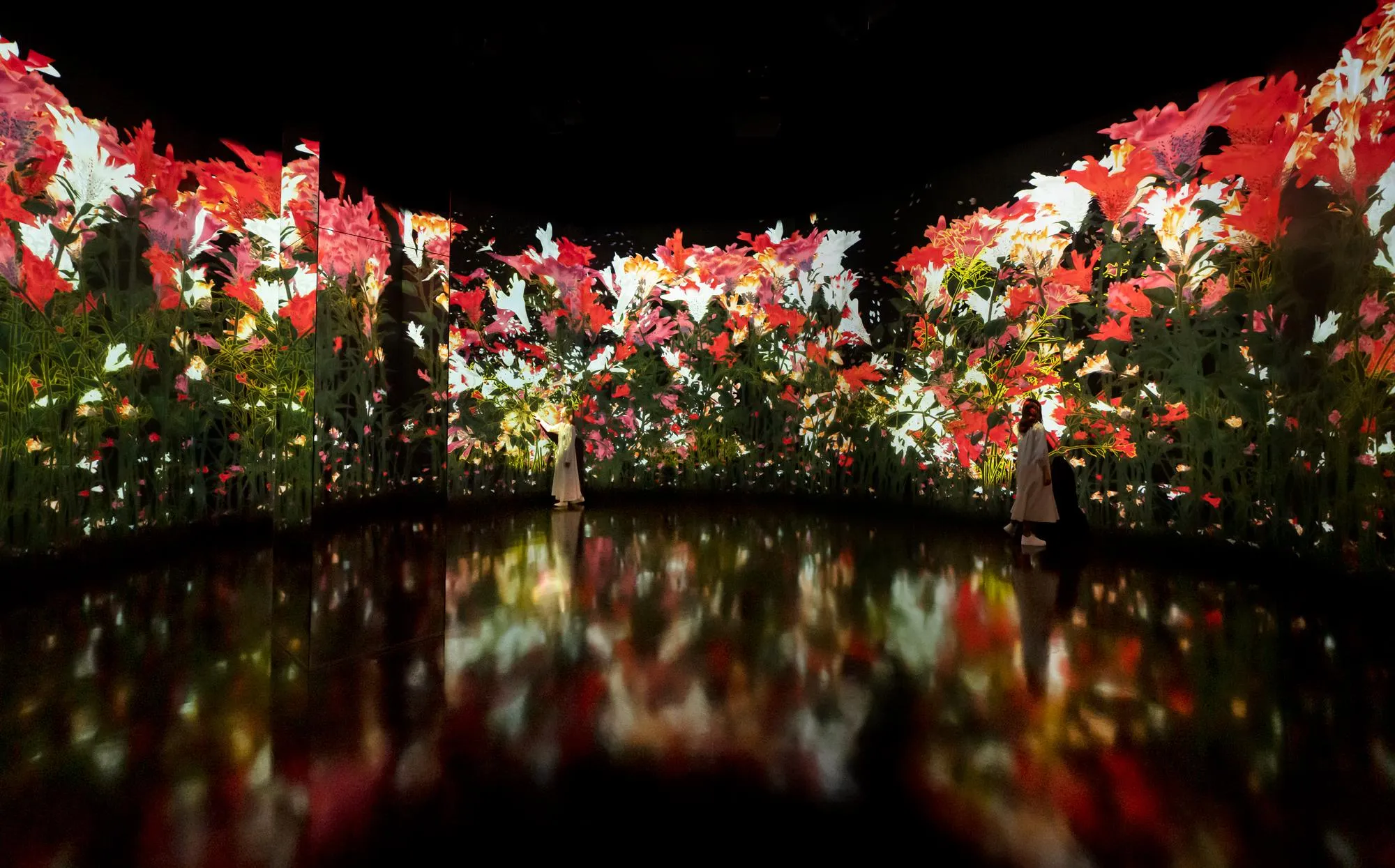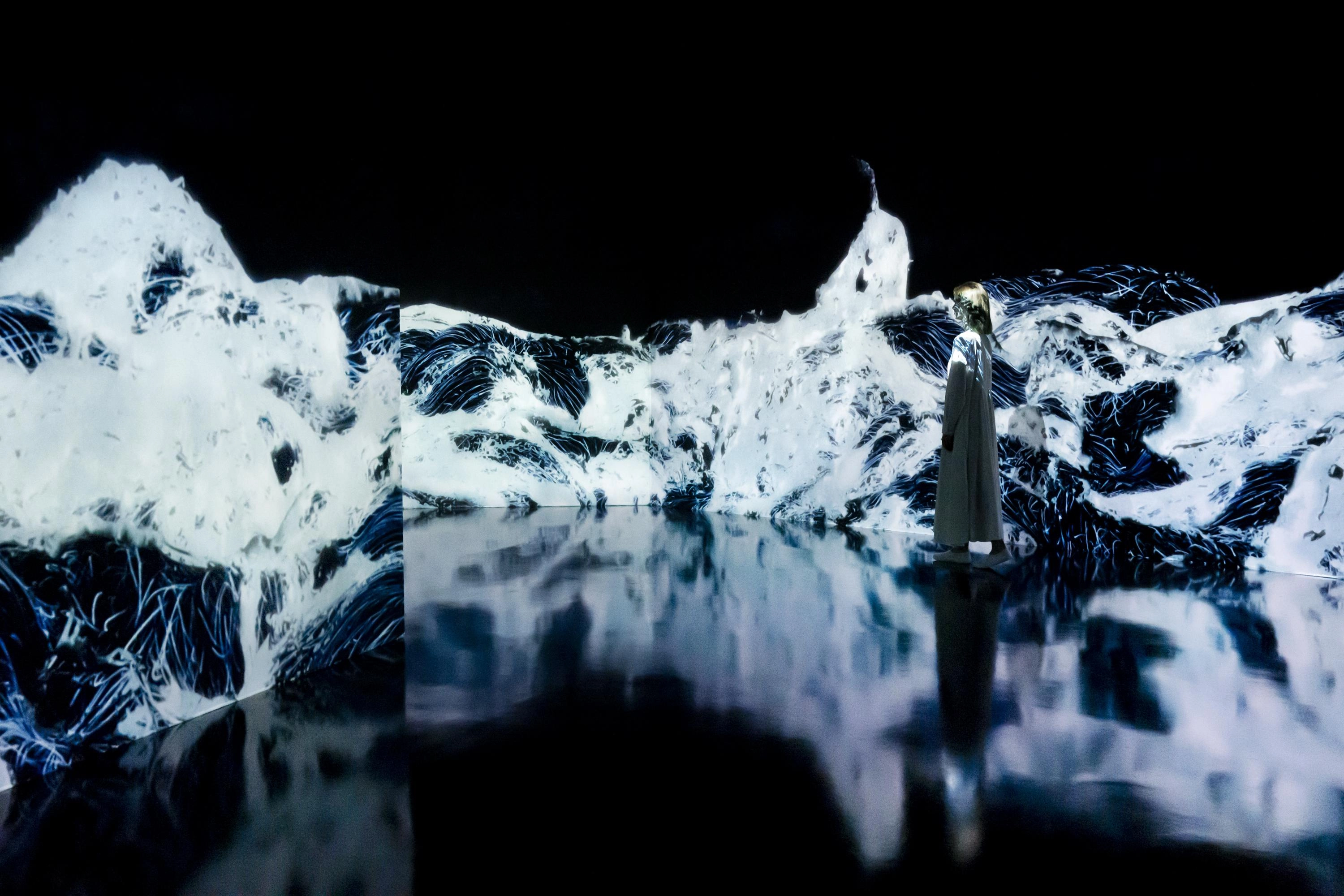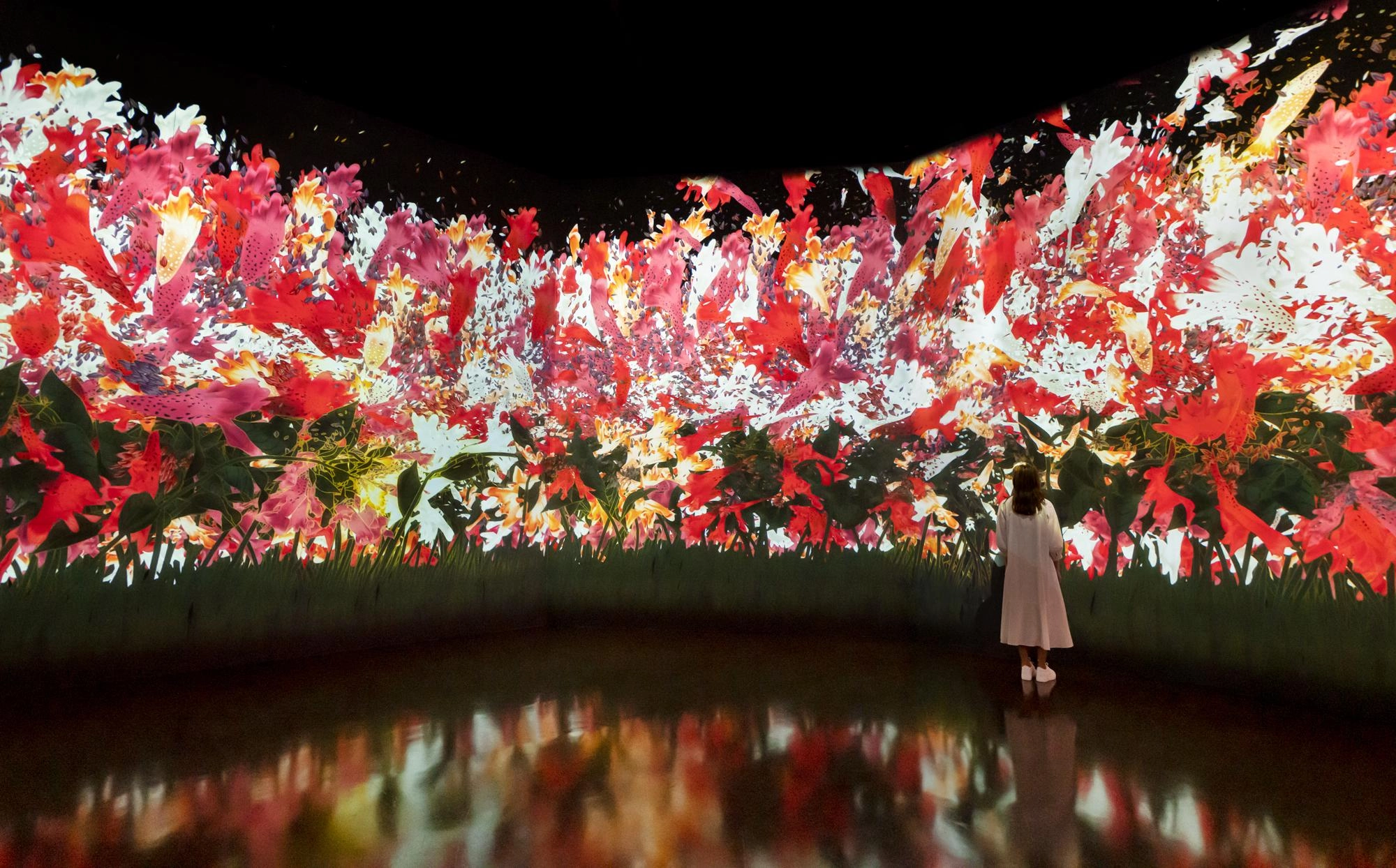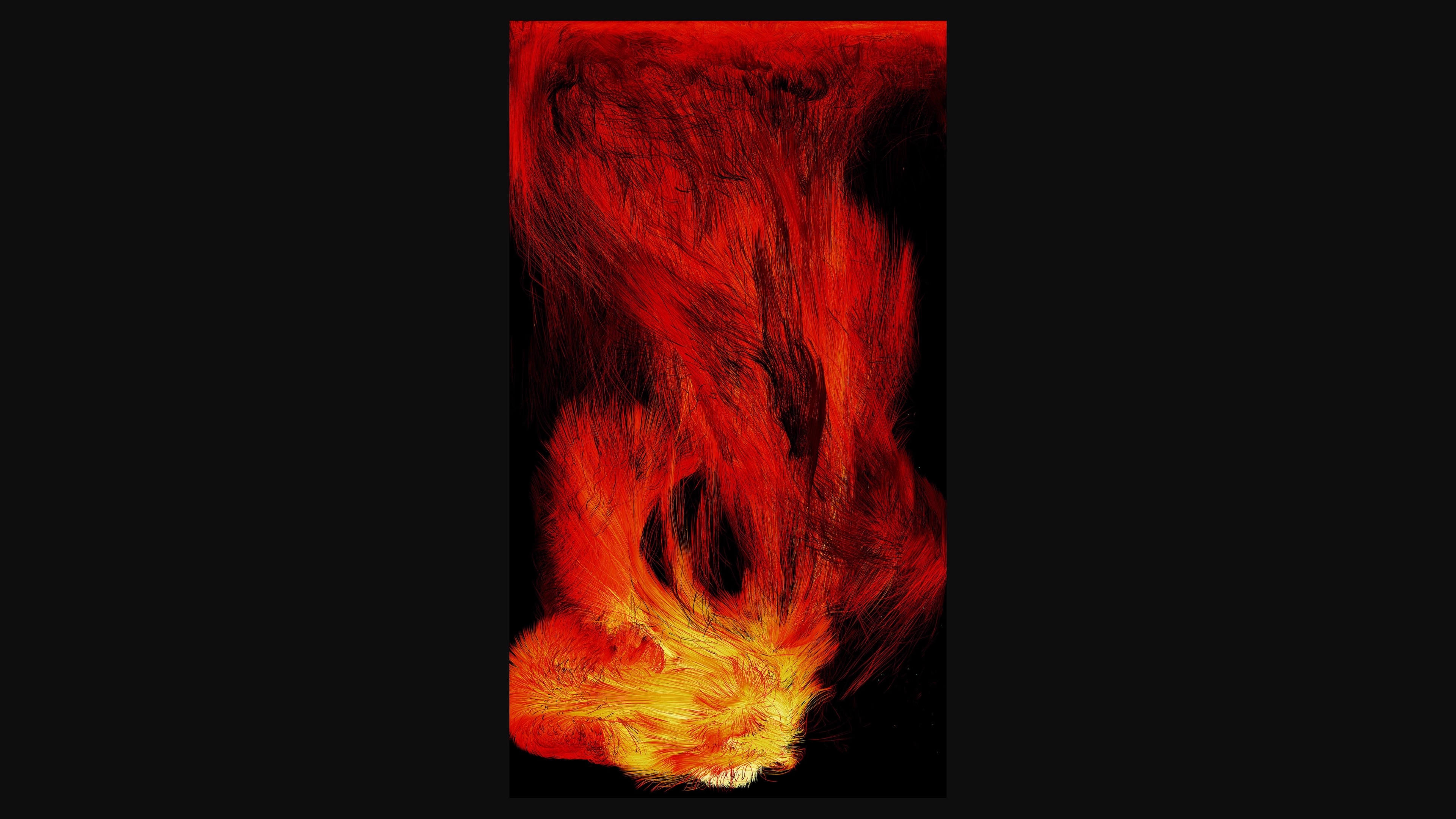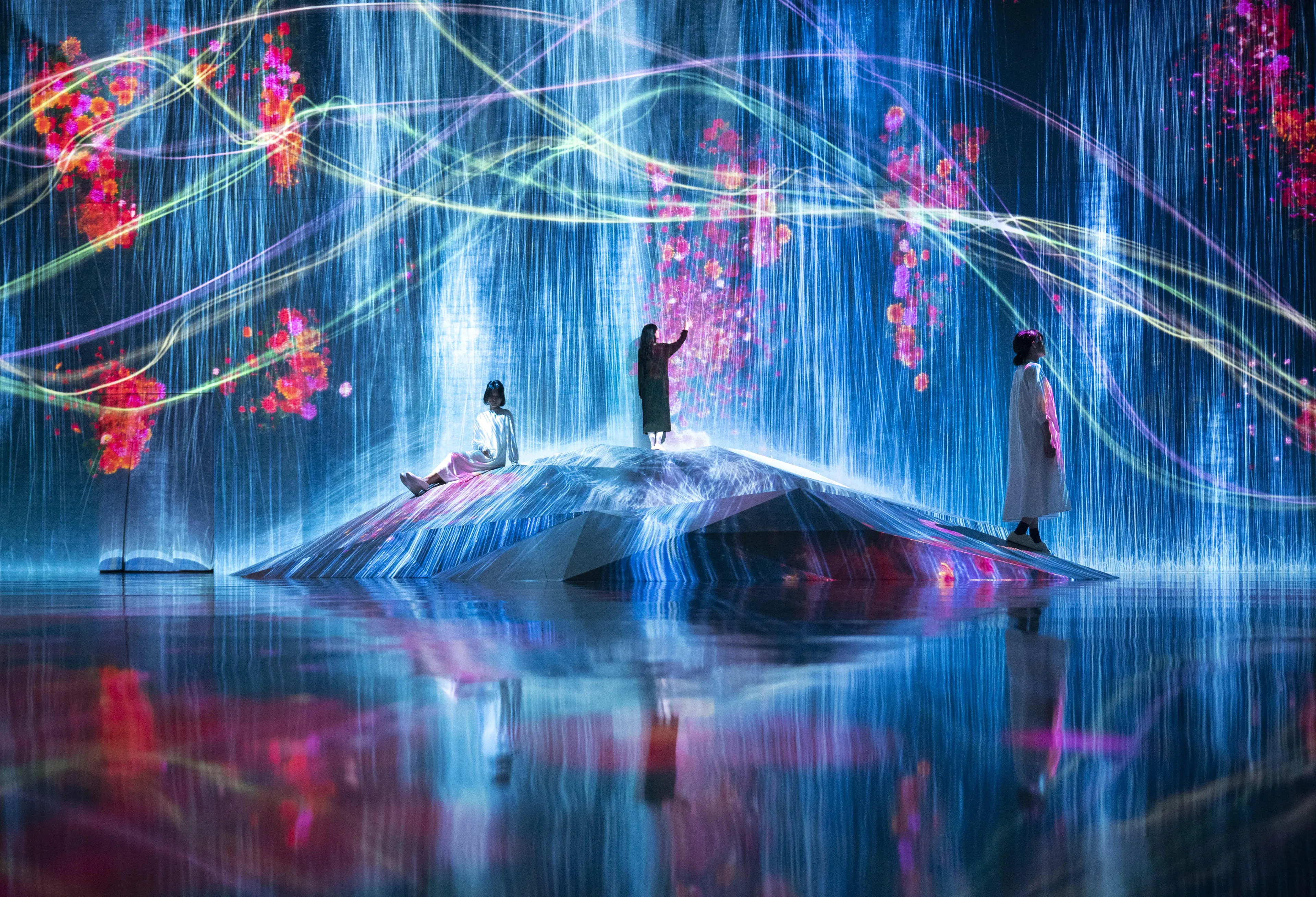All oceans are connected to each other, and so are all the waves of the world.
In classical East Asian art, waves are often expressed using a combination of lines. These waves created by lines allow us to realize that each wave is one part of a larger flow, and conveys life as though the waves are a living entity.
When the waves rise, we can feel a powerful breath of life, as though life is blooming. It seems that each wave has a life of its own. But when the waves collapse and disappear, we realize, with a sense of fragility, that they were a part of the ocean. And that ocean is connected to all of the other oceans. In other words, all of the waves in the world are connected to each other.
The waves seem alive because life is like a rising wave. It is a miraculous phenomenon that continuously emerges from a single, continuous ocean.
The artwork space consists of one continuous and connected wave, with neither beginning nor end. The exterior of this perceived mass is also its interior, and the external and internal are one.
Inside the mass of waves, ever-blossoming flowers continually grow and wither in a repeating and ever-changing cycle of life and death. The waves and flowers do not form a fixed viewpoint, which allows people to move freely around the space. The wall on which the work is projected does not become a boundary between people and the work, and the space filled with flowers is continuous with the space of the people experiencing the work.
The flame artwork duplicates and distributes itself among people, and once the artwork is in the hands of people, it is further actively distributed. The flame will exist on people’s networks, transforming into decentralized, Distributed Art. When the flame exists on a network, it will continue to exist even if the original flame disappears.
Through the experience of transcending the boundaries between the body and the artwork, people redefine their perception of the boundaries between the self and the world, and thereby recognize the continuity between humans and the world.

